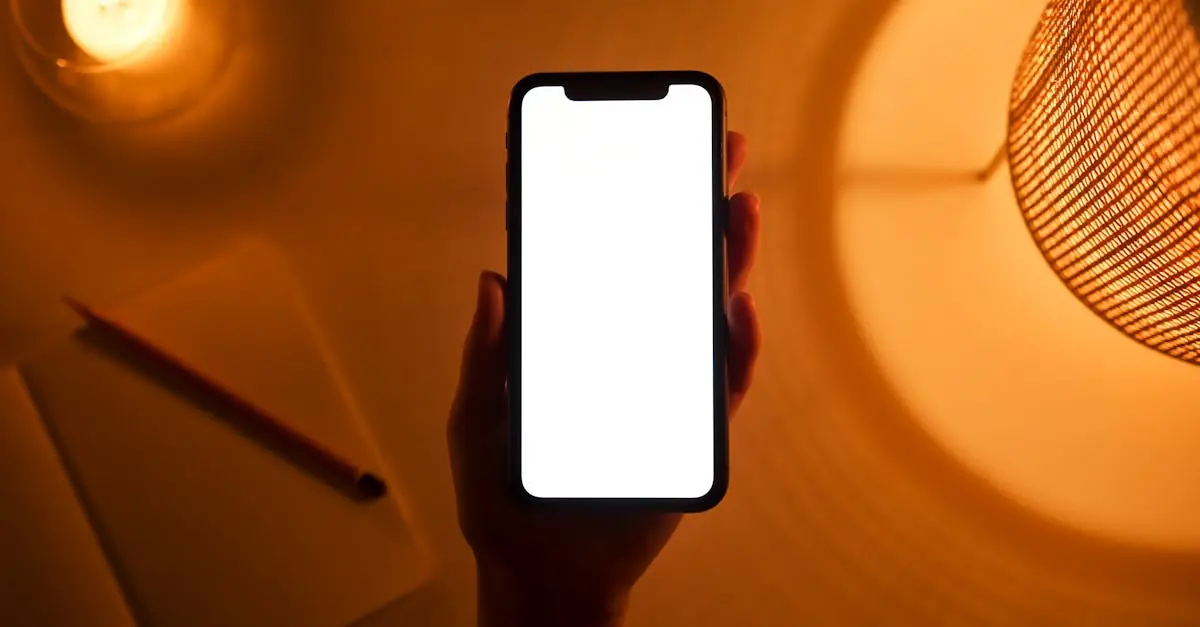Table of Contents
ToggleIn a world where first impressions matter more than ever, mobile app mockups are the secret sauce that can make or break an app’s success. Imagine walking into a fancy restaurant and being served a dish that looks like it was thrown together in a hurry. Not quite appetizing, right? That’s exactly how users feel when they encounter a poorly designed app. A well-crafted mockup not only showcases the app’s potential but also whets the appetite for what’s to come.
Overview of Mobile App Mockups
Mobile app mockups represent a vital step in the app development process. These visual representations allow developers and designers to showcase app layouts before coding begins. Creating mockups helps identify usability issues, providing a clearer vision of functionality and user experience.
Popular tools for creating mockups include Sketch, Adobe XD, and Figma. Each tool offers unique features that cater to different design needs. Designers can choose based on specific project requirements, enabling them to craft detailed and interactive mockups.
Feedback plays a crucial role during the mockup phase. Stakeholders and potential users can review designs, suggesting enhancements for improved usability. Gathering this information early leads to a more refined final product.
Moreover, mockups bridge the gap between technical developers and non-technical stakeholders. They facilitate clear communication, ensuring that everyone involved has a shared understanding of the app’s intended look and feel. This collaboration often results in fewer revisions later in the development process.
High fidelity mockups provide a realistic representation of the final app. These detailed images incorporate color schemes, typography, and iconography, giving users a sense of the actual product. Presenting high fidelity mockups can significantly enhance user enthusiasm and buy-in.
Ultimately, mobile app mockups foster a more efficient design process. They help streamline the workflow, reducing the risk of miscommunication. Through careful planning and execution, mockups contribute to the development of user-friendly apps that meet market demands.
Importance of Mobile App Mockups
Mobile app mockups play a crucial role in the app development journey. They create a visual representation that captures the app’s essence before actual coding begins.
Enhancing User Experience
Mockups contribute significantly to user experience. They allow designers to visualize app layouts and functionalities. Through this visualization, designers can identify usability challenges early in the process. Users engage with prototypes that showcase realistic interactions, providing valuable insights. Testing different design elements in mockups helps optimize navigation and functionality, ensuring a seamless experience. Users’ first encounters with these mockups foster excitement and anticipation before the app launches. Implementing feedback from these sessions ensures that the final product aligns with user needs.
Facilitating Communication
Effective communication hinges on clear representation. Mockups bridge the gap between technical developers and non-technical stakeholders. Stakeholders examine the app’s design and offer actionable feedback, fostering collaboration. Visual mockups eliminate ambiguity by illustrating design choices, which enhances project understanding. They invite constructive discussions, ensuring everyone remains aligned with the project vision. Successful communication leads to more efficient revisions and reduces time spent in later stages. Clarity in design promotes a unified direction for teams, facilitating the creation of a polished final product.
Types of Mobile App Mockups
Various types of mobile app mockups exist, each serving distinct purposes in the design process. Two primary categories include low-fidelity and high-fidelity mockups.
Low-Fidelity Mockups
Low-fidelity mockups provide a basic visual layout of the app’s interface. These sketches, often hand-drawn or created digitally, emphasize structure over detail. Designers use these mockups to outline fundamental features and user flows while keeping focus on the overall concept. Feedback received during this phase helps identify significant usability challenges early in the design process. Low-fidelity mockups encourage creativity and allow for rapid iterations, making them ideal for brainstorming sessions and initial discussions among team members.
High-Fidelity Mockups
High-fidelity mockups offer a polished representation of the final app. These designs incorporate detailed visual elements such as color schemes, typography, and icons, closely mirroring the expected user interface. Stakeholders can interact with these mockups to experience realistic navigation and functionality. High-fidelity mockups are instrumental in validating design choices and ensuring stakeholder buy-in. Feedback gathered at this stage emphasizes fine-tuning elements before development begins, ultimately refining the user experience.
Best Tools for Creating Mobile App Mockups
Many tools simplify the creation of mobile app mockups, enhancing the design process’s efficiency. These tools can be divided into design software options and online platforms.
Design Software Options
Popular design software like Adobe XD, Sketch, and Figma streamline mockup creation. Adobe XD offers extensive prototyping features, while Sketch focuses on vector design and collaboration. Figma provides real-time collaboration, allowing multiple users to work simultaneously. Each option supports plugins that enhance functionality, enabling designers to customize their workflows. These software products help teams visualize app layouts clearly, improving the design accuracy essential for development.
Online Platforms
Online platforms such as InVision, Marvel, and Moqups enhance accessibility and ease of use for mockup creation. InVision allows designers to create interactive prototypes, facilitating user testing and feedback collection. Marvel focuses on user-friendly interfaces, allowing even non-designers to contribute ideas. Moqups provides a versatile solution for planning and prototyping with its drag-and-drop features. Each platform supports collaboration, ensuring widespread team involvement and an efficient design process.
Mobile app mockups play an essential role in the app development journey. They not only enhance the user experience but also streamline communication among team members. By providing a clear visual representation of the app’s design and functionality, mockups ensure everyone is on the same page. The iterative feedback process during the mockup phase leads to a refined final product that meets user expectations.
With various tools available for creating mockups, developers and designers can choose the best fit for their needs. Investing time in this crucial step ultimately leads to the development of user-friendly apps that stand out in a competitive market. Embracing mobile app mockups is a smart move for anyone looking to create an engaging and successful application.





